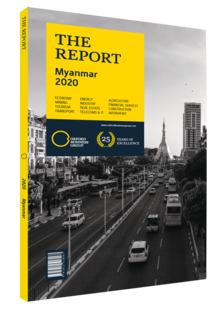Shinichi Kitaoka, President, Japan International Cooperation Agency (JICA): Interview

Interview: Shinichi Kitaoka
How can Japanese official development assistance for infrastructure development contribute to productivity and efficiency gains for the economy?
SHINICHI KITAOKA: Myanmar is geographically and strategically important in terms of connecting ASEAN to South Asia and helping to realise Japan’s Free and Open Indo-Pacific initiative via its three infrastructure support priorities: electrification, urban development and transportation in Yangon. Reliable electricity and transportation are fundamental to driving economic activities and attracting foreign and domestic investment, which is vital for securing market access and providing economic dividends to rural communities. Since it is Myanmar’s economic centre, urban development in Yangon is also indispensable for furthering the country’s economic growth. Regarding infrastructure development, we have supported not only construction efforts, but also master plan development and capacity building to strengthen countries’ operational and maintenance skills and ensure project sustainability. For instance, in the power sector we supported the development of an electricity master plan and improved electric power facilities. The Thilawa Special Economic Zone (SEZ) in south-eastern Yangon serves as a prime example of JICA’s priority activities to increase foreign direct investment. JICA helped to develop the SEZ by supplying high-quality utility services and providing a one-stop service centre for investors. The robust investments made by a number of private companies in the Thilawa SEZ have proven that Myanmar can be a remarkable market for businesses to operate in, provided that the basic fundamentals are present.
In which ways are Third-Country Training Programmes (TCTPs) developing skills?
KITAOKA: Through its TCTPs, JICA supports human capacity development by assisting agencies in third countries to conduct training programmes. These in turn enable participants from neighbouring countries to acquire the skills and knowledge required for development in various sectors. In the ASEAN region JICA has conducted more than 540 TCTPs, covering areas including agriculture, productivity improvement, trade and investment, and port and airport control. For example, Thailand has implemented TCTPs focused on improving agricultural productivity since the mid-2000s. Thailand’s involvement in these programmes provided an example of agricultural technologies that neighbouring countries could adopt, since Thailand’s business conditions, cultures and traditions are more similar to those in neighbouring countries than to those in Japan. For that reason, the TCTP in Thailand has helped to contribute to improving regional productivity.
What mechanisms must be put in place to ensure greater debt sustainability?
KITAOKA: It is important to note that recent decisions from emerging economies to significantly increase their borrowings at market conditions have resulted in growing public debt. According to the UN Conference on Trade and Development, the share of non-concessional public debt to total debt in low-income countries doubled from 2007 to 2016 to reach 46%. JICA’s average interest rate on yen loans is 0.48% per annum, with a repayment period that can extend up to 40 years. Compared to concessional loans from bilateral donors, the commercial borrowing terms of the private sector and some foreign lenders can quickly undermine a borrower country’s debt sustainability. In order to avoid debt crises, international institutions such as the IMF and the World Bank should carefully monitor these situations and urge greater transparency from all creditors. The donor community should also support capacity development in emerging economies to strengthen their debt-management practices. In this regard, JICA conducts specialised training in Japan, and dispatches the relevant experts to advise a number of emerging economies throughout the world on debt sustainability.
You have reached the limit of premium articles you can view for free.
Choose from the options below to purchase print or digital editions of our Reports. You can also purchase a website subscription giving you unlimited access to all of our Reports online for 12 months.
If you have already purchased this Report or have a website subscription, please login to continue.

